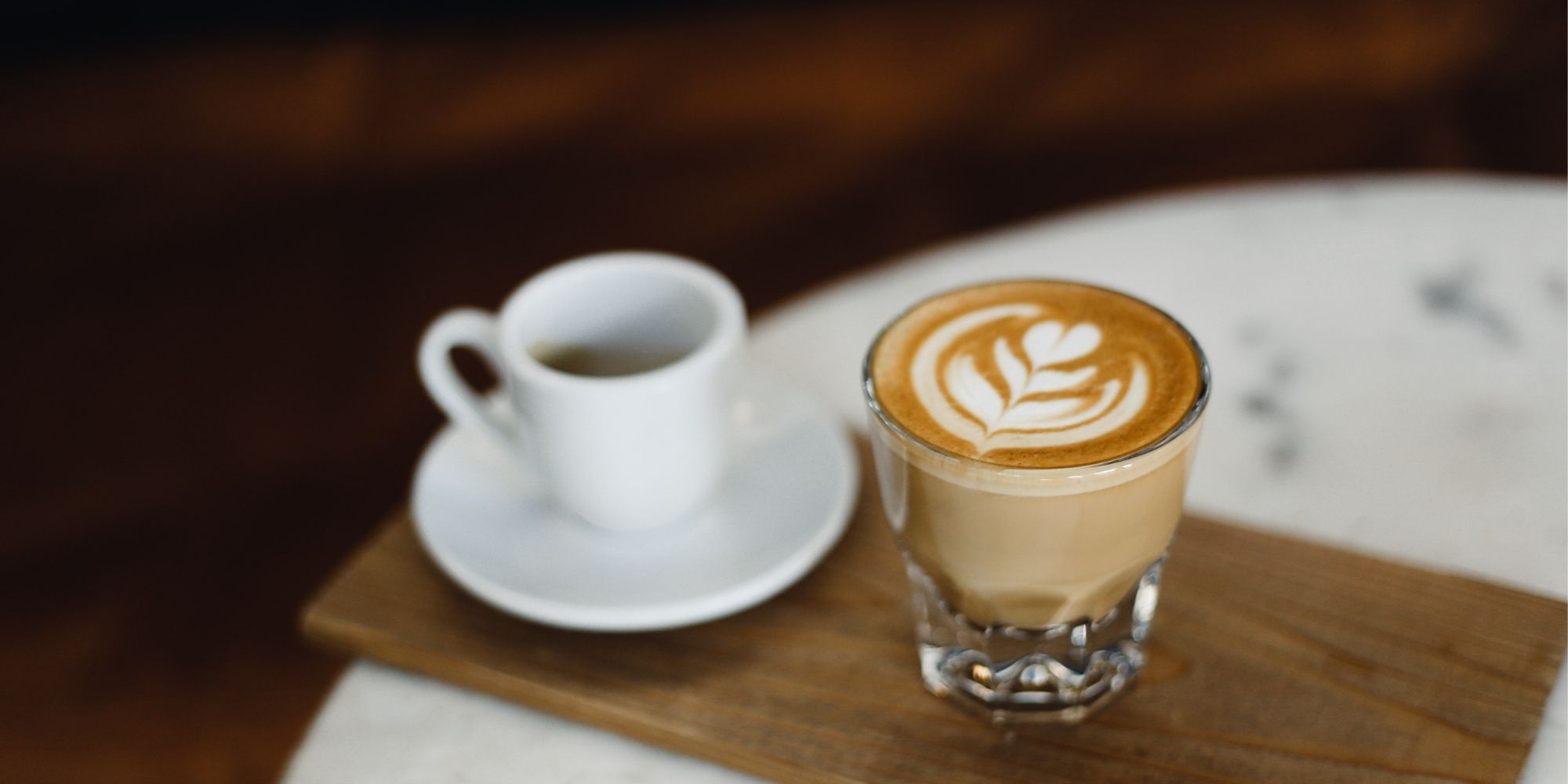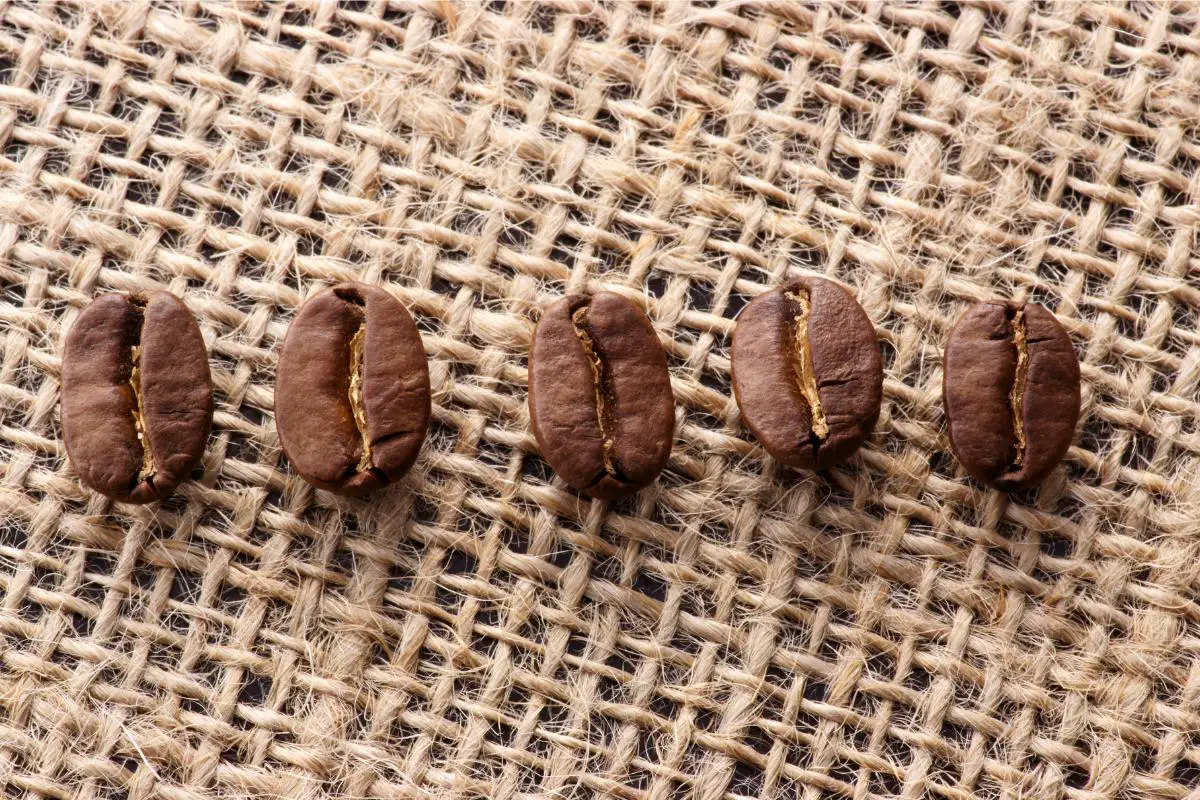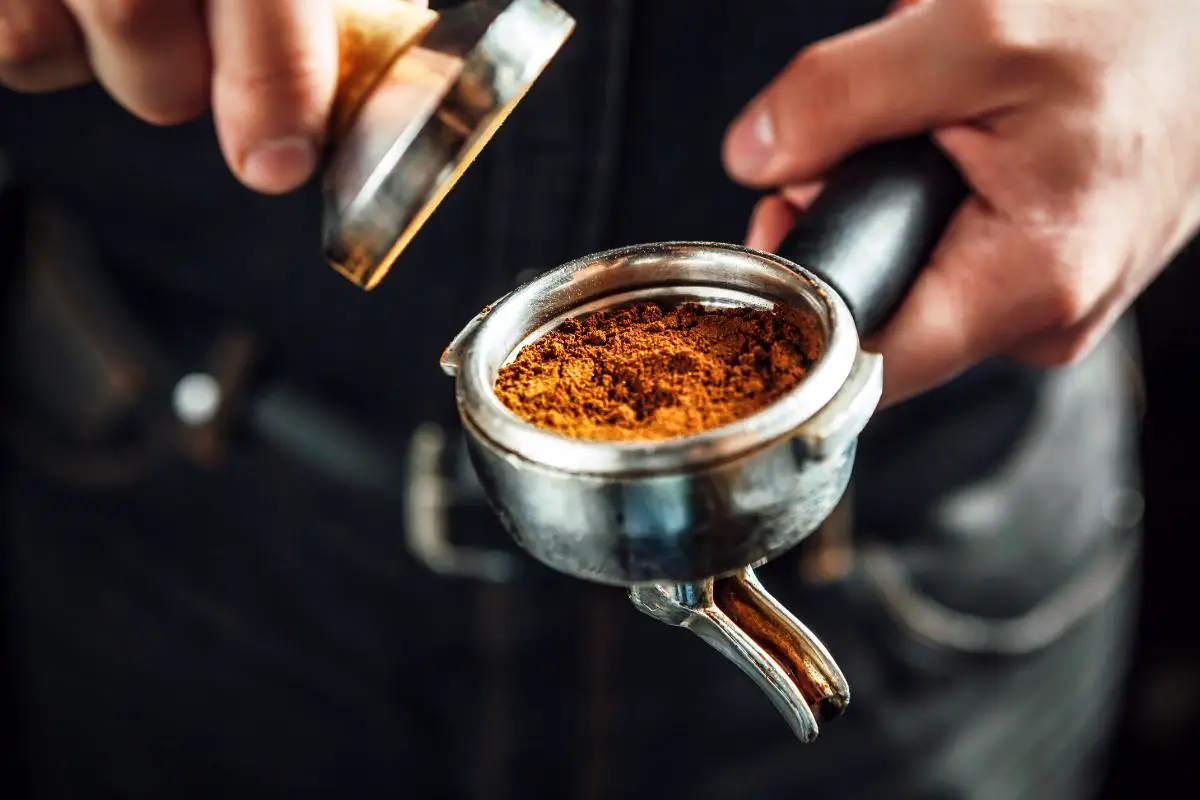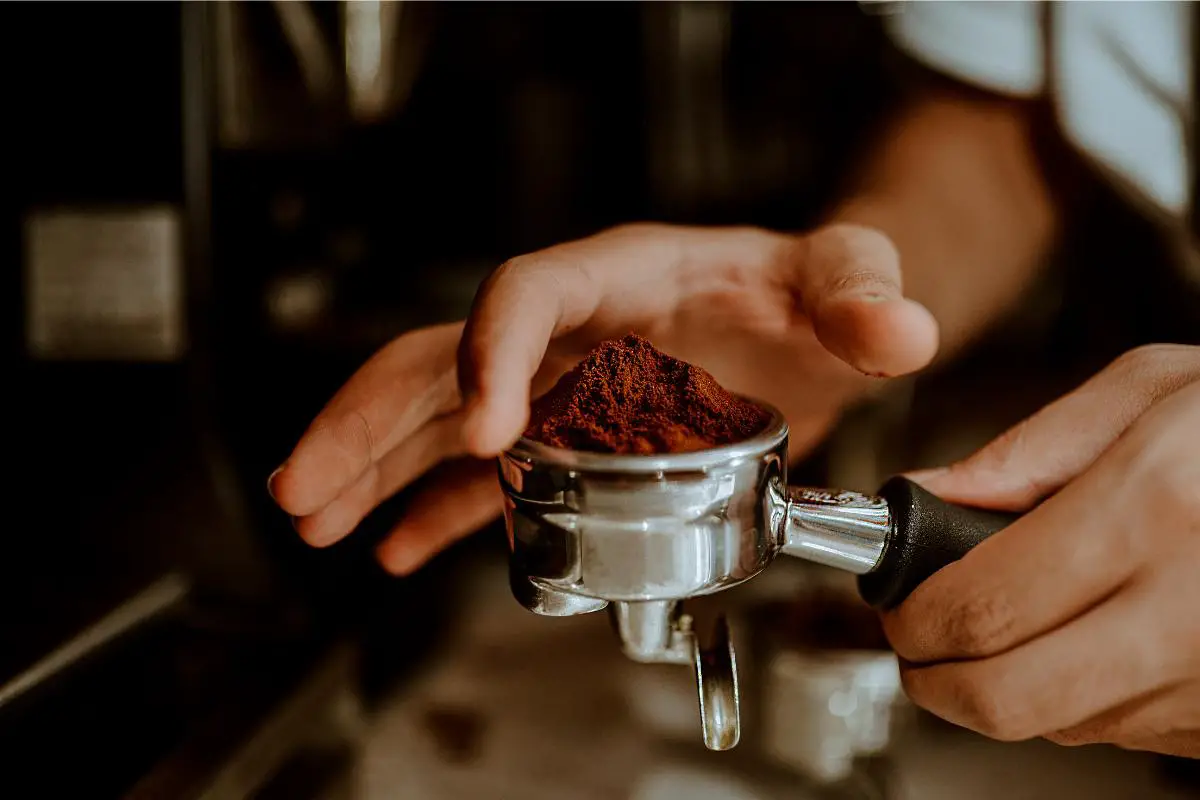Right now the specialty coffee scene is booming, from different coffee types to different brewing methods.
Different coffee types are coming from all over the world, some served hot or cold, others with or without milk, while all come with their own unique flavours.
Whether it is the type of bean or the type of brewing method, in order to expand your coffee knowledge you must try different coffee types.
With such a wide variety of choices to make, things can become confusing quite quickly.
This is where we come in. In this article, we are going to take you through 10 of the most popular different coffee types and their flavours for your taste buds to savour.
This article will help you walk into the next coffee shop bursting with confidence, and save you time and money.
At a Glance
| Espresso | Macchiato | Long Black | Ristretto | Flat White |
| Piccolo | Latte | Irish Coffee | Cold Brew | Iced Coffee |
Table of Contents
What Are Espresso Based Coffees?

It may sound obvious, however, espresso-based coffees are those that are made with an espresso machine or maker.
Generally, you will find that espresso-based coffees share 3 common ingredients; Espresso steamed milk and foam.
Espresso-based coffee beverages are the more popular choice of coffee, however, the main difference between them all is the ratio of the 3 common ingredients within the actual beverage itself.
The three most popular espresso-based coffees are flat white, cappuccino and Latte.
What Are Iced/Cold Coffees?
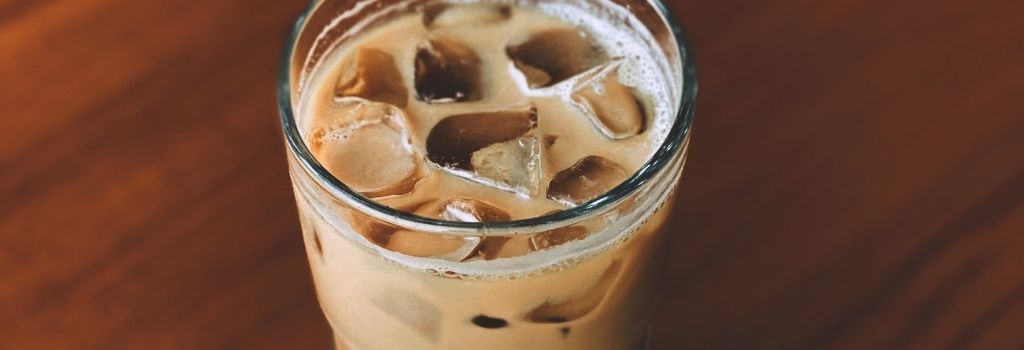
These different coffee types are beverages designed to be served and consumed cold.
The most popular types of these coffees are cold brew coffee, Japanese iced coffee and nitro coffee.
In the past there has been slight confusion between the three different coffee types, however, we will highlight these differences in more detail further down in this article.
10 Different Coffee Types for Your Taste Buds to Savour
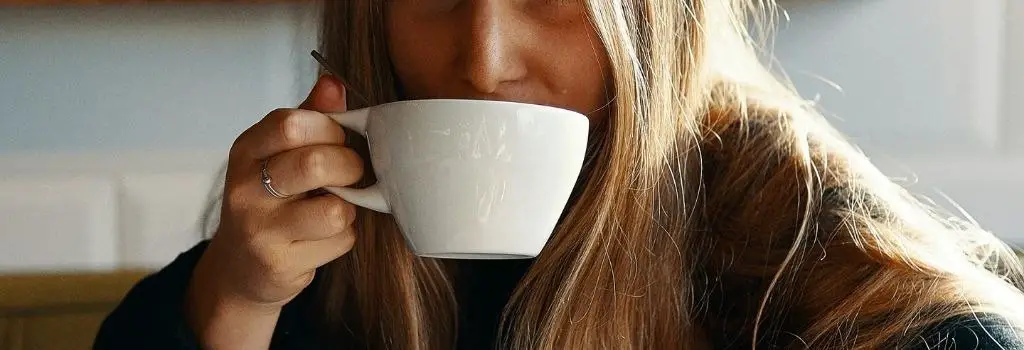
Espresso
The espresso, sometimes known as a short black is arguably the most famous coffee brew available.
“It is the foundation and the most important part of every espresso based beverage”
IvanBez, founder of Latte Art Guide
Espressos are a full-flavoured and concentrated form of the coffee you have just ground, and generally only takes about 30 seconds to prepare.
- Brewing an Espresso – 1 shot of espresso in an espresso cup.
Macchiato
A macchiato is very similar to the espresso, however, it comes with a dollop of steamed milk and foam to lighten the rich espresso.
The beverage can be ordered both short or long, long meaning a double shot of espresso.
Over time the beverage has evolved and may be served slightly differently depending on where you are in the world.
- Brewing a Macchiato – 1 Shot of espresso in a short glass or espresso cup. A dollop of steamed milk and foam placed on top of the espresso.

Long Black (Americano)
Long black’s, and in some countries more commonly known as an Americano, is basically hot water with a shot of espresso topped over it.
With a similar flavour to black coffee, the americano is slightly diluted due to the hot water.
Some recommend that if you are making your own, pour the espresso first, then add the hot water.
- Brewing a Long Black – Fill a cup with 2/3rds full of hot water. Extract 1 shot of espresso over the hot water.
Ristretto
The secret to a Ristretto is that it has a characteristic of its own due to its shorter extraction time.
Basically, a ristretto is the smaller sibling of the espresso.
Therefore, this beverage may not have as much of a well-rounded balance, but instead comes with a strong, sweet and fruity experience, and certainly has a lot to offer.
- Brewing a Ristretto – Extract a standard espresso shot with half the amount of water. Alternatively, turn off a normal espresso extraction before the espresso starts to blonde.
Flat White
Originating from New Zealand/Australia, flat whites have arguably become the most popular milk-based coffee in most coffee shops around the world.
Consisting of espresso and a smaller amount of steamed milk.
The steam milk acts more of a supporting flavour, as you still get the taste and aroma of the espresso pulling through in the drink.
- Brewing a flat white – 1 shot of espresso into a cup. Add steamed milk into the cup but no micro-foam.

Cafe Latte
Latte’s coffee beverages are much sweeter than your typical espresso due to the steam milked and micro foam that is added to the drink.
You can order Latte’s plain, or have a flavoured shot added to the drink, such as vanilla.
“Cafe lattes are considered to be an introductory coffee drink since the acidity and bitterness of coffee is cut by the amount of milk in the beverage” – webstaurantstore.com.
A latte generally has a lot more of the milk flavours pulling through rather than the aromas of the espresso.
- Brewing a cafe latte – Extract 1 shot of espresso into a tumbler glass. Add steamed milk. 1cm of micro-foam on top of the steamed milk.
Piccolo Latte
Basically, a piccolo latte is a smaller version of the well-known Cafe Latte, however, a piccolo is a lot more espresso driven than a Latte.
This beverage is typically served in 3-4oz glasses.
The single espresso shot is topped with steamed, stretched milk, allowing it to blend with the coffee, and has a small amount of foam on top of the drink.
- Brewing a piccolo latte – 1 shot of espresso or 1 ristretto shot of espresso in an espresso cup. Add steamed milk and a small amount of micro-foam.
Irish Coffee
Being the only alcoholic coffee beverage on this list, Irish coffee mixes hot coffee, whiskey, and sugar.
Sometimes you will find some served with whipped cream on top.
- Brewing an Irish coffee – Pour the hot coffee into a mug or heat-proof glass, then add the whiskey and sugar. Stir until the sugar has dissolved. Gently float the cream on top.
Cold Brew
Cold brew is created by steeping medium-coarse coffee grounds in cold water that is never exposed to heat.
To make a cold brew coffee, it requires brewing up to 12 – 18 hours, which can be done either at room temperature or in the fridge.
Therefore, this beverage requires time rather than heat to extract the coffee oils and flavours.
The result is a smooth, richly infused coffee with generally lower acidity levels.
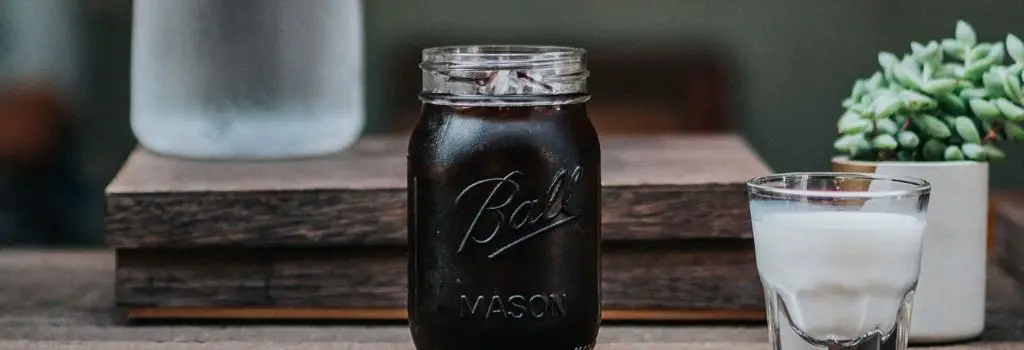
Iced Coffee
Iced coffee is where you brew a hot shot of espresso and immediately pour it over ice.
The contact with ice will help release all the flavours and typically has milk or a dash of cream or sweetener added to it.
There are a variety of iced coffee recipes out there in regards to the ratios used, however, all Iced coffees represent a perfect balance of a refreshing beverage and soothing cold coffee.
Different Types of Coffee Beans
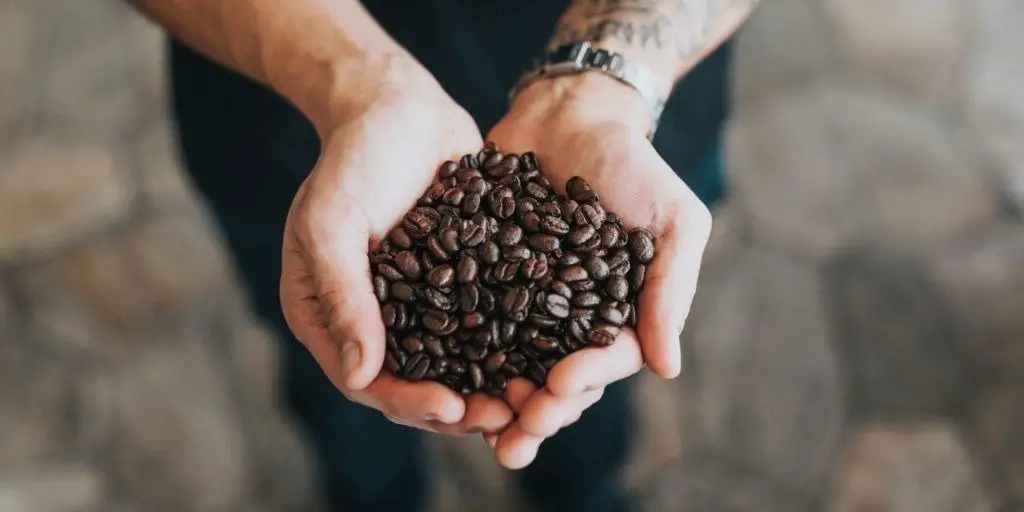
Although there are hundreds of different types of coffee species, you will find that the majority of coffee that you are buying is either an Arabica or Robusta coffee bean, which you can source from a London coffee bean delivery.
These two types of coffee beans also contribute to different coffee types.
Arabica
Arabica is the coffee bean of choice due to its smooth and pleasant taste compared to Robusta.
A cup of Arabica coffee is aromatic and flavourful, with notes that can be described as floral, fruity, citrus, earthy, buttery, chocolate, caramel, honey, or sugar.
The taste can also range from sweet to tangy, depending on where the bean is grown and how it is processed.
“Arabica accounts for about 80% of the world’s coffee production“.
Vanessa McBryde, Perfect Daily Grind Contributor
Robusta
Robusta coffee beans generally make up the rest of the world’s coffee production, and are a much smaller coffee bean.
However, robusta coffee beans contain twice the amount of caffeine than the more preferred Arabica coffee bean.
This in fact makes the robusta coffee bean cheaper, as it can result in bitter and harsh flavours, so therefore, is often used in coffee blends.
Despite this, Robusta coffee beans do still have their place and are slightly on the rise in recent years.
Different Types Of Manual Coffee Brewing Methods

Now we have an idea of the different coffee types, we need to touch base on the different coffee manual brewing methods that are taking over the specialty coffee scene.
Different brewing styles can result in changes in the flavour and strength of the drink.
Here are just a few manual brewing styles for the main different coffee types;
Pour Over/Drip Coffee
The most popular pour-over/drip coffee methods include coffee makers such as the Chemex and V60.
This method of brewing coffee is considered one of the fastest, simplest and cheapest options.
In short, hot water is poured evenly over coffee grounds into a paper filter. Then with the help of gravity, the brewed coffee drips slowly and directly into a cup or pot.
The results are a smooth, light, cleaner, and well-rounded cup of coffee.

Plunger/Press Coffee
When it comes to plunger/press coffee, the two most popular options are French Press and AeroPress.
Both involve the ground coffee to be soaked, steeped and strained in hot water, resulting in a heavier, full-bodied coffee brew.
This different coffee brewing method is well suited for coffee drinkers that enjoy a luscious, expressive and complex taste experience.
Percolate Coffee
Percolate coffee involves stovetop coffee makers, commonly known as Moka pots.
This type of coffee is known to produce strong, flavourful, and rich coffee.
Stovetop-style coffee makers use steam pressure from boiled water in the lower section to pass through coffee grounds in the mid chamber of the pot.
Brewed coffee then sits in the higher chamber, and is then served.
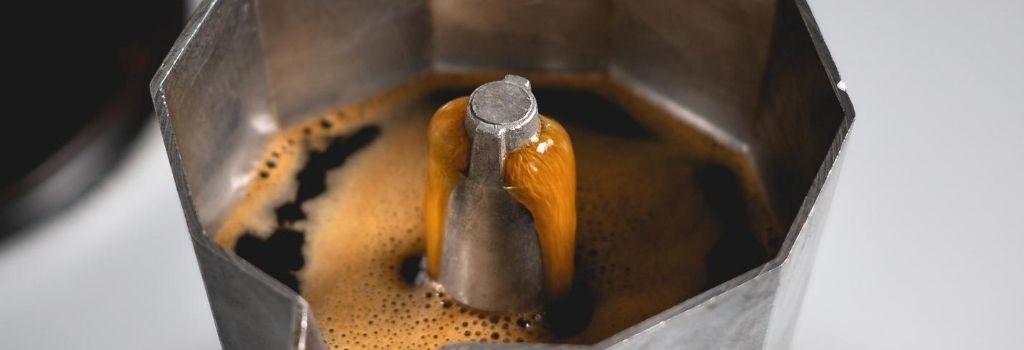
Vacuum Coffee
A vacuum coffee maker brews coffee using two chambers where vapour pressure and gravity produce coffee.
This type of coffee maker is also known as vac pot, siphon or syphon coffee maker.
Coffee grounds are added to the upper vessel and vapour pressure forces hot water to immerse the coffee. Once the heat is removed, gravity pushes the brewed coffee back through a filter into the bottom vessel.
The results are a delicate and mellow cup of coffee.
Different Coffee Types F.A.Q’s

A: Drink your coffee black. Black coffee, including espresso, has less than 10 calories per 8-ounce cup.
If you want to cut calories and keep your coffee as healthy as possible, consider ordering a regular brew without any added ingredients.
A: Mocha. It is one of the sweetest kinds among all different types of coffee.
The Mocha consists of a shot of espresso mixed with a spoon of chocolate powder, on top you have to add steamed milk and 2-3 cm of foam, and finally some sprinkles of chocolate powder.
A: Arabica coffee beans make coffee that is less bitter than robusta beans.
High-quality arabica coffee that has been roasted light to medium, barely has any bitterness at all.
A: There are 30 types of coffee in the world. However, these are only the most popular ones.
There are so many variations, flavours, aromas, and additives that it would take more than a lifetime to taste them all.
Conclusion: Different Coffee Types
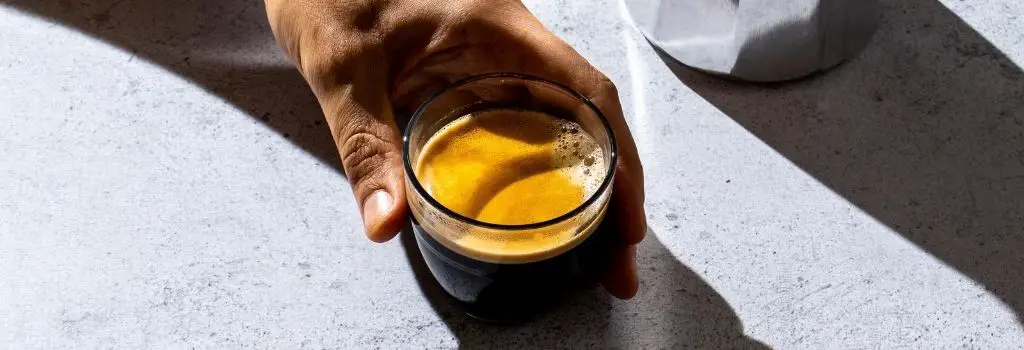
Overall, coffee’s rich history has fascinated many. With the rise of third-wave coffee, enthusiasts are wanting to know more than ever to seek out the best coffee for them.
When it comes to different coffee types, there are a number of factors which can change the cup of coffee entirely.
All these different types of coffee are only the tip of the iceberg.
As coffee is an important part of worldwide cultures and history, you will always get to find a new variation that you have never heard of before.
Hopefully, this article has helped you understand some of the different coffee types, as well as the most popular types of coffee beans and brewing methods.
If you enjoyed this article, read more like this by checking out our Specialty Coffee Beginners Guides

